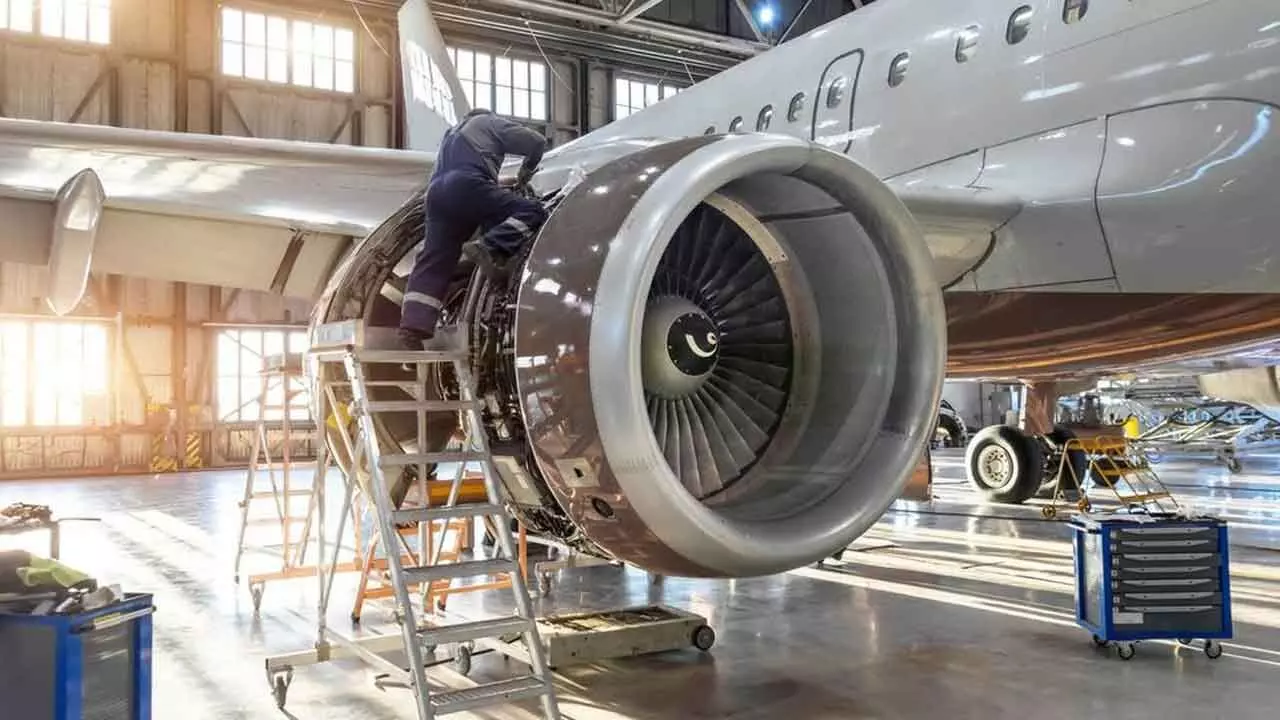Aircraft MRO industry likely to reach $4 billion in seven years
India, and not China, will lead the expansion in the next 10 years
Aircraft MRO industry likely to reach $4 billion in seven years

Three years after Covid-19, with inflation, raw material and labour shortage, the aerospace industry faces a pressing need to modernize and optimize production at all points along the supply chain
The latest edition of the Global Fleet and MRO Market Forecast 2024-2034, shows that the size of the global fleet will increase 28 per cent over the next 10 years, expanding from today’s 28,400 aircraft to 36,400 by 2034. The earlier peak was 27,800.
Meanwhile, reflecting that slower expansion, demand in the maintenance, repair, and overhaul (MRO) sector will grow 1.8 per cent annually on average through 2034, when revenue will reach $124 billion. The forecast for 2023-2033 was that the sector would expand at a 2.9 per cent CAGR. In 2024, MRO revenue will rise almost three per cent to $104 billion from last year’s $101 billion.
Asia will once again serve as an economic engine for the industry. But over the next decade, it will be India, and not China, which will lead the expansion. Currently at just over 600 planes, India’s fleet will add aircraft at a rate of almost 13 per cent over the first five years and nearly 10 per cent for the 10-year forecast period. By 2034, it will be 2.5 times today’s size.
To give a sense of how fast it is expanding, India has over 1,800 aircraft on order, which is more than triple the current size of its fleet. Although, it is the world’s most populated nation, only three per cent of them fly regularly.
According to data from the Union Civil Aviation Ministry, the Centre has taken several steps to facilitate setting up of aircraft MRO services in India through various policies, regulatory and other incentives.
As part of the announcements made in the Union budget, the period for export of goods imported for repairs has been extended from six months to one year. Additionally, the time limit for re-import of goods for repairs under warranty has been extended from three to five years.
The government announced new MRO guidelines on September 1, 2021, with a promise to provide land allotments to MROs in Airports Authority of India-operated airports. In effect, GST on MRO services has been reduced from 18 per cent to five per cent with full input tax credit from April 1, 2020.
Transactions sub-contracted by foreign original equipment manufacturers (OEMs)/MROs to domestic MROs are treated as "exports" with zero-rated GST from April 1, 2020.
The government has also exempted customs duty on tools and toolkits and simplified clearance processing of parts, besides allowing 100 per cent foreign direct investment via the automatic route for MROs.
However, despite all these, the industry does face risks. The two global airframe manufacturers — Airbus and Boeing — are pushing their production capacity to the limit, hoping to reach new heights in monthly output over the next decade. Yet it appears unlikely at this point that either will reach their targets on time without more investment in their own production facilities and those of their chief suppliers.
Three years after Covid-19, with inflation, raw material and labour shortage, the aerospace industry faces a pressing need to modernize and optimize production at all points along the supply chain.
Putting a particular strain on both production and MRO is the raft of new engines in next-generation aircraft.
One of the more publicized situations involved Pratt & Whitney’s geared turbofan (GTF) platform, which led to the grounding and inspection of Airbus 320 fleets. But all the new entrants — from CFM International’s LEAP to Rolls-Royce’s Trent XWB — have experienced delays and problems. The additional engine work is pushing the CAGR for MRO to 2.3 per cent and has prompted aircraft manufacturers and MRO providers to increase engine MRO capacity.
According to a Niti Aayog study, India can ensure substantial advancements by developing a sustainable end-to-end ecosystem for commercial, general and military MRO activities. The benefits would potentially include reduction in foreign exchange outflow, greater employment opportunities and augmentation of domestic MRO capability. Complementary benefits to airline operators will include lower MRO costs, reduced turnaround time and fewer inventories.
This study intends to delve deep into various aspects influencing the MRO ecosystem in India, identify the challenges faced by various stakeholders and finally, outline a roadmap for near and long term developments in the sector.

